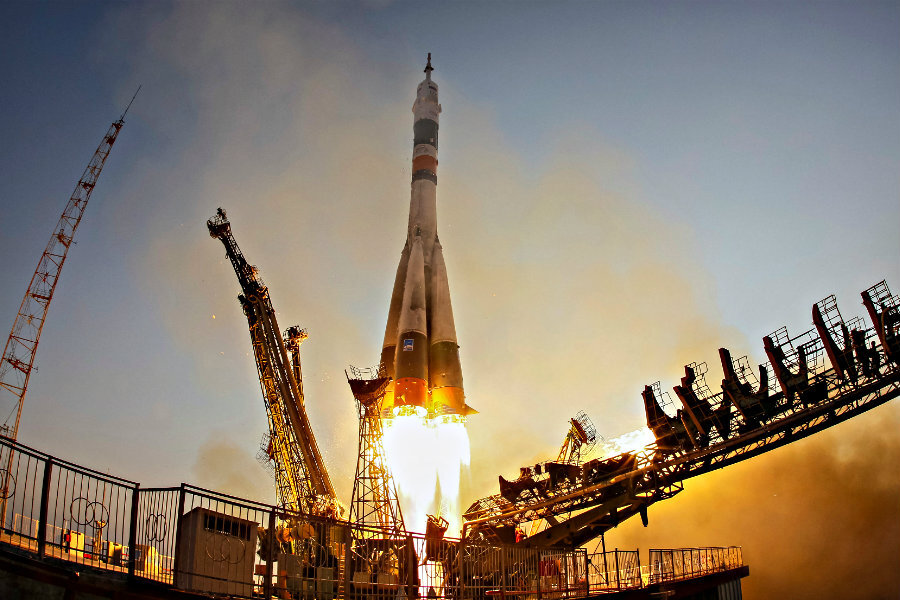Is NASA hiding UFO evidence?
Loading...
It happened on July 9. Just as a video feed from the International Space Station (ISS), posted by NASA, showed an unidentified bright spot near the corner of the stream, the video feed cut out, prompting rumors that NASA is once again trying to cover up the existence of UFOs.
NASA’s reassurances that the video feed interruption is a common occurrence have failed to placate everyone. UFO believers say that the US government’s long history of cover-ups make it easy to believe that this might just be one more.
“NASA seems like the agency people love to hate,” Dr. Seth Shostak of the Search for Extraterrestrial Intelligence (SETI) and NASA told the Christian Science Monitor by phone. “They love to look at new photos of Pluto, but every time a camera cuts out, they are convinced there are aliens and a cover-up involved.”
Dr. Shostak says video interruptions happen all the time. The ISS often moves out of range of the Tracking and Data Relay Satellites, cutting off the video feed, creating the same sort of scenario that happened last week.
As for the blip on the screen right before the feed cut off, it was most likely a small object, not far from the camera, that was probably moving rather slowly relative to the space station. Even a tiny drop of water looks big and bright and quick when it is twenty feet away, says Shostak.
Shostak points out that it would be unreasonable for NASA to cover up evidence of alien visitation, as such an event would likely increase NASA’s funding.
Much of the country’s interest in UFOs was sparked in the 1960s, Shostak says, when rumors about Area 51 intrigued the country. Yet by that time, strong radio signals had only been going out into the universe for just over a decade, barely enough time to reach a small number of star systems in the near vicinity. If aliens were responding to a call, they would have already been in the neighborhood. And in that case, why didn’t they come visit before?
In fact, Shostak says that even today, only a few thousand star systems have received radio transmissions that began broadcasting in the 1950s, making it mathematically unlikely that aliens are giving the ISS the flyby treatment.
“Even a Klingon colony just over 30 light years away couldn’t have sent anybody to visit us yet,” Shostak tells the Monitor. “It would take about 30 years for our message to have gotten there, and another 30 for the aliens to return.”
“It is a very peculiar belief to me,” he says.
Yet despite their apparent improbability, conspiracy theories about UFO sightings and government cover ups abound.
A 2012 National Geographic poll indicated that approximately 80 million Americans, or 36 percent of the country, believe that UFOs exist. More shockingly, a whopping 77 percent of Americans believe that there are signs that aliens have visited the Earth, according to ABC News.
If simple explanations are so much easier to provide, why are conspiracy theories so popular?
It comes down to a deeply held distrust for those in power, says University of Florida’s Mark Fenster, the author of Conspiracy Theories: Secrecy and Power In American Culture. And when it comes to information about space and space exploration, Mr. Fenster told the Monitor in a phone interview, NASA and the US government hold a near monopoly.
“People are suspicious of any sort of power and hold-over information,” says Dr. Fenster, “When the government reports on what they’ve found, any suspicious person will question what the government has released.”
This deep suspicion, Fenster says, stems from America’s cultural identity as a postcolonial society. We have a country because we distrusted our government, that of colonial England, he says, and that attitude has persisted to this day. The American people require proof.
“You have to have facts in hand before you put your mouth in gear,” Stanton Friedman, a UFO researcher who has studied the subject for years, tells the Monitor.
According to Mr. Friedman, a retired nuclear physicist who has written extensively about the 1947 Roswell incident, UFO cover-up believers find inconsistencies in government data releases damning. Friedman cited the limited release of 156 pages of mostly blacked-out information on UFOs as an example.
“There’s no question the National Security Agency is covering something up,” says Friedman. “They refuse to release anything.”
Despite the government’s tightfisted grasp on supposed UFO information, however, conspiracy theory researchers maintain that it is still unlikely that a secret of this magnitude could stay secret for long.
Earlier this year, The Christian Science Monitor reported on a study by Oxford University researcher David Robert Grimes, who evaluated the scale of potential cover-ups using mathematics.
The number of people the government would need to silence in order to maintain many rumored cover-ups, Dr. Grimes said, is in many cases prohibitive. Grimes did not analyze UFO conspiracy theories, but he did apply his equation to another alleged conspiracy allegedly perpetrated by NASA, namely, the faked moon landing.
To silence those who knew about the so-called moon landing hoax, in which the US government supposedly staged the 1969 moon landing, the government would have to keep around 400,000 people quiet.
Using his equation, Grimes also posited that cover-ups like that of the moon landing would be revealed within three or four years, making it further unlikely that such a cover-up could exist.
Still, despite the math behind the matter, Fenster tells the Monitor that, “People come to issues like the existence of UFOs with a particular story to tell. And any anomalies they experience, they find a way to fit them easily within that story.”








